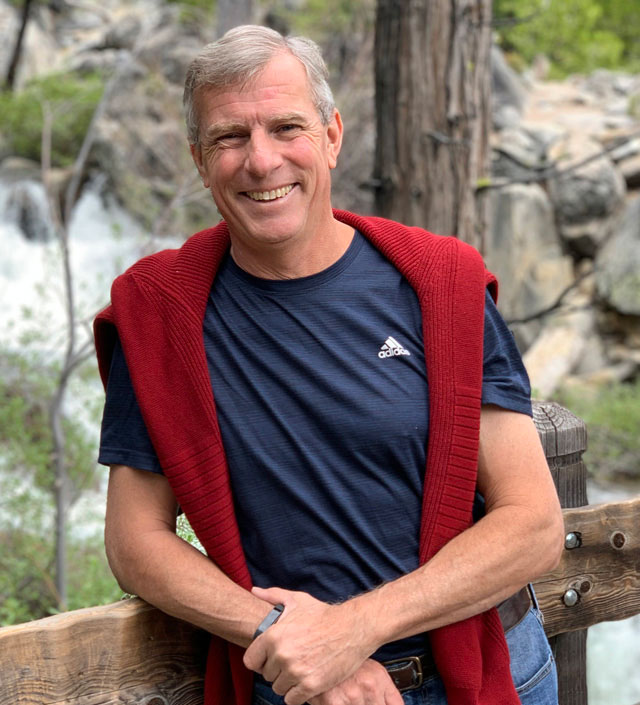America’s senior population isn’t just growing, it’s radically transforming. And businesses that want to profit from it need to understand the sweeping changes in older consumers and workers.
That’s the message from Justin Ladner, a senior policy advisor with AARP who spoke at The Power of the Longevity Economy, a webinar on Dec. 14.
Those 50 and older are playing an increasingly important role in the economy, Ladner says. In 2020, “50-plus households,” those headed by somebody at least 50 years old, accounted for slightly more than half — 50.3% — of global consumer spending. By 2050, those households will be almost 60% of the economy, he says. In the United States, 50-plus households generate 56% of consumer spending.
But it’s more than the sheer numbers, it’s the new ways older consumers are spending.
Tech-savvy seniors a major market force
“I think that there is a long-running stereotype about what an older consumer is in terms of what they spend money on, and what their behavior looks like in general,” Ladner says. “And we found that is absolutely not the case.”
For example, the idea that tech products interest predominantly younger consumers is out of date, he says. “If I actually look at the consumption of tech goods and services, the fastest-growing groups are all older consumers.”
Webinar host Demetric Duckett, agrees, noting that his mother, in her mid-80s, is tech-savvy and active on a wide variety of social media. “Some of my younger friends are like, ‘I can’t figure it out.’ I tell them, ‘Call my mother,’” says Duckett, managing partner of the marketing firm Known.
Citing Pew Research Center data, Ladner says older adults rapidly caught up to their younger counterparts in smartphone, social media, and tablet use from 2012 to 2021. Consumers 50 and older accounted for 53.3% of communications product spending in the U.S. in 2020, and this share is projected to grow to 58.5% by 2050, according to the AARP’s Global Longevity Economy Outlook report. While the communications product category does not perfectly represent tech spending, many tech goods and services fall under this category, Ladner notes.
Education is the category where older consumers spend the least, Ladner says. But preconceived notions are wrong here, too.
“You would expect education expenditures to be concentrated among younger adults and even younger adults with children,” he says. “However, the big surprise is that those disparities are not nearly as big as you would imagine. So even though older consumers are not majority spenders for education, they still account for a huge fraction of education spending, and that fraction is expected to approach a near majority by 2050.”
Later parenthood drives consumer changes
Some of the shift in older-adult behavior is the result of delayed parenting, Ladner says. People who wait to have children until their late 30s or early 40s find themselves paying for their kids’ college educations when they’re in their 50s and 60s and balancing that against planning for retirement. Older adults with dependent children are significantly more likely to participate in the labor force than their counterparts without dependent children, he says.
New labor policies and employment practices are needed to prevent discrimination against older workers and increase the ability of workers to effectively save for retirement throughout their careers, Ladner says. “These recommendations are not specific to older parents, but this group is especially likely to benefit from them.”
Older workers surge in workforce
But businesses also need to focus on the flip side of this demographic upheaval: the rise of the older worker.
“If I go back to 1992, which is really not very long, just a generation ago, we find that fewer than one in nine full-time workers were in this 55-plus category,” Ladner says, noting that workers 65 and older made up a “very tiny fraction” — 1.6% — of the full-time workforce.
Currently, one in four full-time workers are 55-plus, and the “vast majority” of this growth has occurred among workers who are 60 and older, he says.
Figures from the Bureau of Labor Statistics on the total workforce — including part-time workers — paint a similar picture. According to the BLS, 65-plus workers made up 3.1% of the total workforce in 2002, and 6.6% in 2022. The BLS predicts they will be 8.6% of the total workforce in 2032.
However, some estimates of the participation of 65-plus people in the workforce are much higher. For example, Pew Research finds 19% of Americans age 65 and older were employed in 2023, and their earning power has grown. Pew also found that 23% of older workers are likely to be self-employed, more than twice the level — at only 10% — of workers age 25 to 64.
Employer misconceptions lead to age discrimination
One of the biggest difficulties older workers face is age discrimination, Ladner says. For example, a business considering whether to hire a worker in their early 60s might assume that the person plans to retire in a few years —a common misconception. “Today, that’s actually quite likely to not be the case,” he says. “They might want to work another 10 to 15 years.
“We have so many more people now than at any point in history working well past 65. So, I encourage businesses and people who are hiring workers to think about what this person as an individual wants to gain out of their work.”
Employers should adopt practices that eliminate the potential for these types of stereotypes to influence hiring decisions, he says. But he cautions against querying an older job applicant about their plans.
“Generally, employers should avoid asking age-related questions or making comments about age to both job applicants and employees. But a lawyer would need to provide the legal implications of asking job applicants about their age or how long they intend to work.”
Employers need to understand that older workers have a “diversity of wants,” Ladner says.
For example, some workers are technically retired but regularly enter and exit the labor force. “They might come in during the summer and work a summer job because that’s something that they like to do. Maybe they’re moving from one location to another seasonally and they sometimes will work, sometimes they don’t want to work,” he says.
Hiring older workers is good for business because studies show that workers of every age enjoy participating in an age-diverse workforce, Ladner says. Younger workers appreciate older workers for their experience and mentorship, and older workers appreciate working with younger colleagues for a “reverse mentoring” relationship where the young may have more technical knowledge in new fields.
“So, there’s this other issue of age diversity itself being a key driver of productivity,” Ladner says.
An AARP study finds that while 63% of older workers say they are satisfied or extremely satisfied with their job, 70% of those who work in a multigenerational environment say the same. And while 67% of younger workers are satisfied or extremely satisfied with their jobs, that increases to 73% among younger workers in a multigenerational work environment. Another AARP study reports that 83% of global executives recognize that a multigenerational workforce is key to business growth and success, Ladner says.
Barrier to work: Reskilling
Many older workers face a barrier to continued employment when they are laid off from a declining industry and need to reskill for a different field, a process that can be expensive or targeted to young workers, he says.
“So ideally, you would want a system in place where workers of any age in your workforce can attain the resources they need to reskill or to upskill, to train, to do new things, to evolve as workers to meet whatever personal goals that they have in the goals of the business,” he says.
Recent AARP research shows that satisfaction is highest among older workers who have opportunities to learn new skills or say they are continuing to grow in their job, and 89% say a new job must allow them to use their skills and talents, Ladner says.
According to an AARP survey of workers 40 and older, 54% are taking or have taken job-related skills training in the past two years; 43% keep their skills up to date for better job performance; and 20% develop new skills to advance in their career.
The argument that hiring older workers takes away employment from younger workers is a fallacy, Ladner says.
“Oftentimes economics is viewed as a zero-sum game—that if I help a specific group, I have to be taking from another group,” he says. “We actually find that that’s completely not the case. … If you have somebody in your business who’s 65 or older, and, let’s say, they retire, they move on to a new position. You’re not going to replace that person with somebody who’s come right out of college. That’s just not how that works.
“For example, workers approaching the traditional retirement age of 65 tend to be in positions that require a significant level of experience; if a worker in such a position retired, they would not be replaced by someone who is just starting their career,” Ladner explains, adding that many economists have highlighted that this stereotype has no factual basis.
Pandemic shows importance of older workers
Ladner says that during the COVID-19 pandemic, many older workers — including those not yet 65 — decided to retire. The “great resignation” had big economic effects because of the loss of older workers’ considerable experience and skill sets, he says. There was a 2% drop in 65-plus worker participation, but that was small compared to the increase in years prior to that, he says.
Another barrier: negative self-image
Employers aren’t the only ones who have outdated notions about older workers, Ladner says. Oftentimes, so do the workers themselves.
“There are sometimes stereotypes for people even about themselves that are negative, that reduce their ability to live the life that they want to live,” he says. “So, one thing is having a message of empowerment for older people, like knowing that that you can succeed if you want to change careers.”
“Combating ageism and age discrimination in the workforce requires engaging with all stakeholders to produce an environment that empowers workers of every generation,” he adds.
The bottom line, Ladner says, is that businesses need to pay attention to the older population, both as consumers and workers, because their numbers are only going to continue to grow.
“The major message here is this idea of innovating and being flexible and evolving to understand the difference in how people are changing as consumers and how people are changing as workers,” he says.
In a four-decade career in journalism, Ed Prince has served as an editor with many of New Jersey’s leading newspapers, including the Star-Ledger, Asbury Park Press and Home News Tribune.







